In this article, I'll show you how to build a simplistic circuit to generate negative ions. Negative ions have been known to contribute to fresher air, happier mood, and general health benefits. However, they also look amazing in the dark (check out the photos below, purple plasma is amazing!). And if all else fails, they make a cool nightlight.
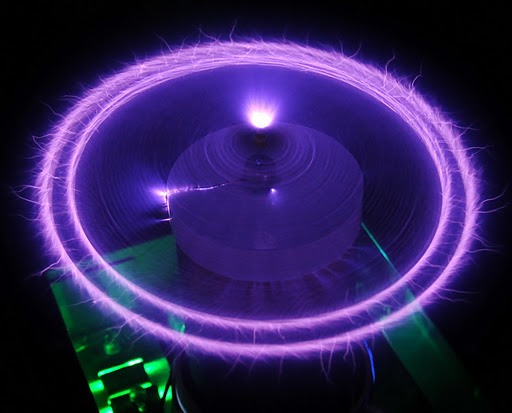



If you've ever been around a Tesla coil, cathode ray tube TV or sometimes even on a trampoline, you've probably noticed that smell; the smell of "static" electricity. I say "static" because, in this case, negative ions are produced by "streamers" of electricity looking for their positive counterpart. In a negative ion generator, the positive side of a high voltage source is grounded, where the negative side is attached to a sharply pronged antenna. The antenna allows the negative voltage to "stream out", creating negative ions.
The Circuits Parts
There are two simple circuits for creating negative ions (there are more, but I'm only covering the easiest and most effective). The first circuit uses power from the mains, a voltage multiplier, and a metal antenna. The second circuit uses a flyback transformer, a driver circuit, and a metal antenna. The first circuit is generally more effective, but the second can run on lower voltages, making it portable with fewer parts necessary.
Circuit 1:
To build circuit one, you'll need a 33nf 1000V polyester capacitor (1x), 68nf 1000V polyester capacitor (1x), 3nf 1000V polyester capacitors (17x), 1N4007 diodes (20x), and 3.3M 1-watt resistors (3x). You'll also need a metal antenna. The antenna can be made out of pretty much any "pointy" metal. For example, a series of needles attached together in series:

You could even hack a fan into an antenna by attaching metal nails to the blades, and a rotary conducting surface to produce a "spinning corona" effect, and also circulate the negative ions with the fan itself. Use your imagination! The circuit diagram below shows how to create the negative ion generator. The "E, D, C, B, A" represents the antenna; you can simply attach your own antenna to the output of the three resistors.
Note: The circuit diagram specifies 220 volt AC input. This can be substituted with 120 volt AC input, with output levels decreasing accordingly.

Circuit 2: (extracted from Wireless Transfer of Energy)
Circuit two consists of a flyback transformer, an NPN transistor, two resistors, and a metal antenna. You'll need an old tube TV to extract the components from (or an electronics supply outlet).
Using a screwdriver specific to your TV's screws, carefully open up the TV. Once opened, you should first cut the large red wire connecting a suction cup to a large black "thing"; the flyback transformer. MAKE SURE you use insulated cutters! Now, using a large piece of insulated wire, discharge the flyback transformer by shorting the red wire to any ground. The flyback transformers tend to hold a charge, similar to that of a Leyden jar. Its always a good idea and safety precaution to discharge them, even though its unlikely to be a lethal shock. Now, desolder the flyback transformer from the TV circuit board. Once extracted, it should look like this:

Now for the tricky part, identifying the pins. Set your voltmeter on "beep when shorted" and start testing the pins. Once your voltmeter beeps, check out the resistance. If it's around .6-1, you've found your primary coil. Solder two wires to those terminals and leave them lose for later on. You now need to wrap a feedback coil, which consists of about 6 turns of insulated wire on the outer ferrite core. Once finished, it should look something like this:

The Circuit
The circuit itself is quite simple. An NPN transistor switches the electricity through the primary coil, depending on the input from the feedback coil. Imagine turning on and off a light, depending on if the light is on or off. In other words, when the light is off, you turn it back on again, but when it's on, you turn it off. This creates a fluctuating magnetic field, which in turn generates electricity in the secondary windings.
To learn more about electromagnetism and transformers, check out Electromagnetic Weapons.
To build the circuit, extract the NPN transistor from the TV circuit (it should be the largest one on the board—keep the heatsink it's attached too as well). To check and identify the pins, turn your voltmeter to the diode setting and follow these steps. Once you've identified the pins of the transistor, identify and desolder the 220 ohm resistor, and the 27 ohm resistor. Finally, build the circuit below:

When finished, test it out CAREFULLY! The red wire should arc to a pin on the flyback transformer. This pin is the ground, note its location.
The antenna should be the same as in circuit one; they both do the same things. However, experiment with which flyback output gets you the best "ion wind" or purple corona. Depending on the flyback, the output should be DC. It's VERY rare you'll find an un-rectified flyback unless you've used a very old TV. The AC flybacks are extremely useful and are worth their weight in gold, but that's another story.
When turned on, the metal antenna should produce little streamers of purple corona, if you've attached the right output (either the red wire, or the previously noted ground pin). If there are no streamers, try switching the red wire for the ground, or vice versa. Once you've identified the "streamer-output", take the other wire and ground it. It's very rare that the red wire will be the "streamer-output", since that output is (usually) the positive. However, there are many different kinds of flyback transformers, exceptions may occur.
Warnings
- THESE DEVICES USE AND PRODUCE HIGH VOLTAGE! Be very careful!
- DO NOT touch the metal antenna when the device is operating!
- I am not responsible for any damage or harm you cause.
Just updated your iPhone? You'll find new emoji, enhanced security, podcast transcripts, Apple Cash virtual numbers, and other useful features. There are even new additions hidden within Safari. Find out what's new and changed on your iPhone with the iOS 17.4 update.



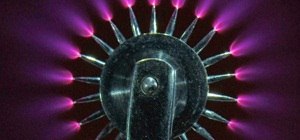
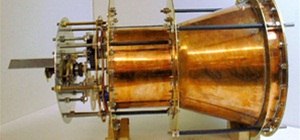
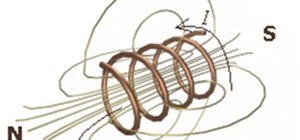

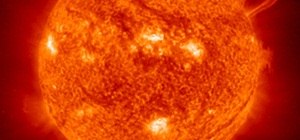
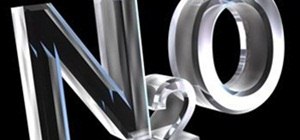
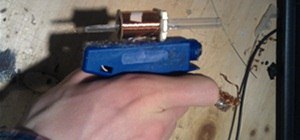

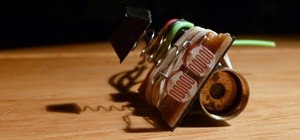
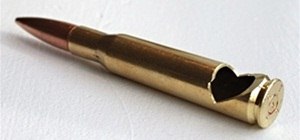
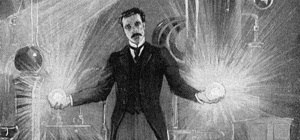
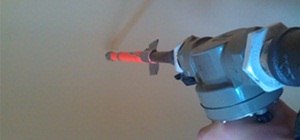
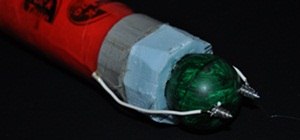


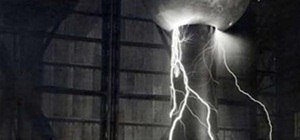
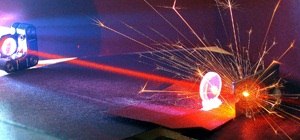
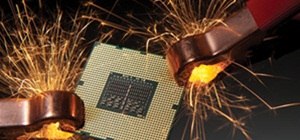
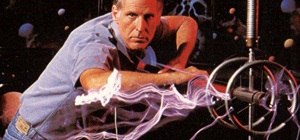
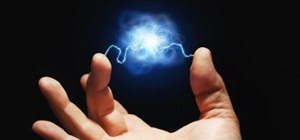
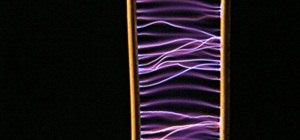
25 Comments
I love the first option. The discharge is beautiful. Wish I had a Wartenberg wheel laying around though. But one can be made, like you mentioned. Probably my least concern though, since it's kind of the easiest part (for me, anyway).
mhmm, plasma is my favourite color :) and yes, the simple voltage multiplier actually works much better than the second circuit, but the second circuit can be modified to create "arc music" or "singing arcs". those are amazing!
I think it's quiet an irony that "negative ions" has positive effect. LOL, Kidding aside that plasma looks so cool!!! BTW your projects rock dude \m/(,
haha never noticed that! yes, quite ironic :) and thanks!! Electricity is my favourite energy.
about how much would tthis cost total?
nothing, if you use an old TV :) if you chose circuit one however, the capacitors and diodes would probably be about 40 cents each at an electronics store...so maybe 10-20 dollars?
nice! thanks. tim to hit craigslist
how to use it as positive ion generator ?
Can circuit 1 be used in water to produce mist, like in common water features, or is the voltage too high? Also, can 240v input be used?
Hmm...ive never heard of a high voltage source used to nebulize water...maybe try ultrasonics? And 240 should work fine, higher output power though - be verrrry careful!
Negative ion generators are what is used to create surface mist in water features. There in lay my interest, to add a mist maker to the bowl of a water fountain.
will i get mist if i simply immerse the antena in water??
No, unless you use perfectly pure water it will short out.
No, that's ultrasonics.
something like this? http://www.mainlandmart.com/foggers.html
My flyback looks almost exactly like the one in your second pic, but I can't see where the wires should go... and I 'm having trouble understanding the schematic.. please help, i'd really like to build this device..
Also, those knobs on the second pic, mine has them aswell, are they of any use in the final product?
Could we get a video on how to build one?
This video covers the steps pretty well (in a small scale, safe & compact way).
I really to see a "dummy's version" Step by step with pictures and all. But, I will try my best. I am pretty handy...
can u tell abou the precautions to b taken??
hello can i use 22nf instead 33nf and 2.5nf instead of 3nf,please help
Hi Christopher thanks for sharing. Can you tell me how you produced such dazzling images. As in what you used as a support and are the needles rotating for all the images? esp the one which looks like a tree?
Also do you know if the amount of neg ions produced compare to a domestic neg ion generator? Thanks!
????
is it safe enough to be in contact with people? We are not going to put antenna, instead we are going to put the positive output in contact with our skin and then connect the ground to the ground like literally. Our assumption is that it's going to be electrostatic. Do you think it will work? or will it fry us?
Great story
Another way to power it up is to use a 24 volt AC adapter "walmart lett than $15"
Share Your Thoughts